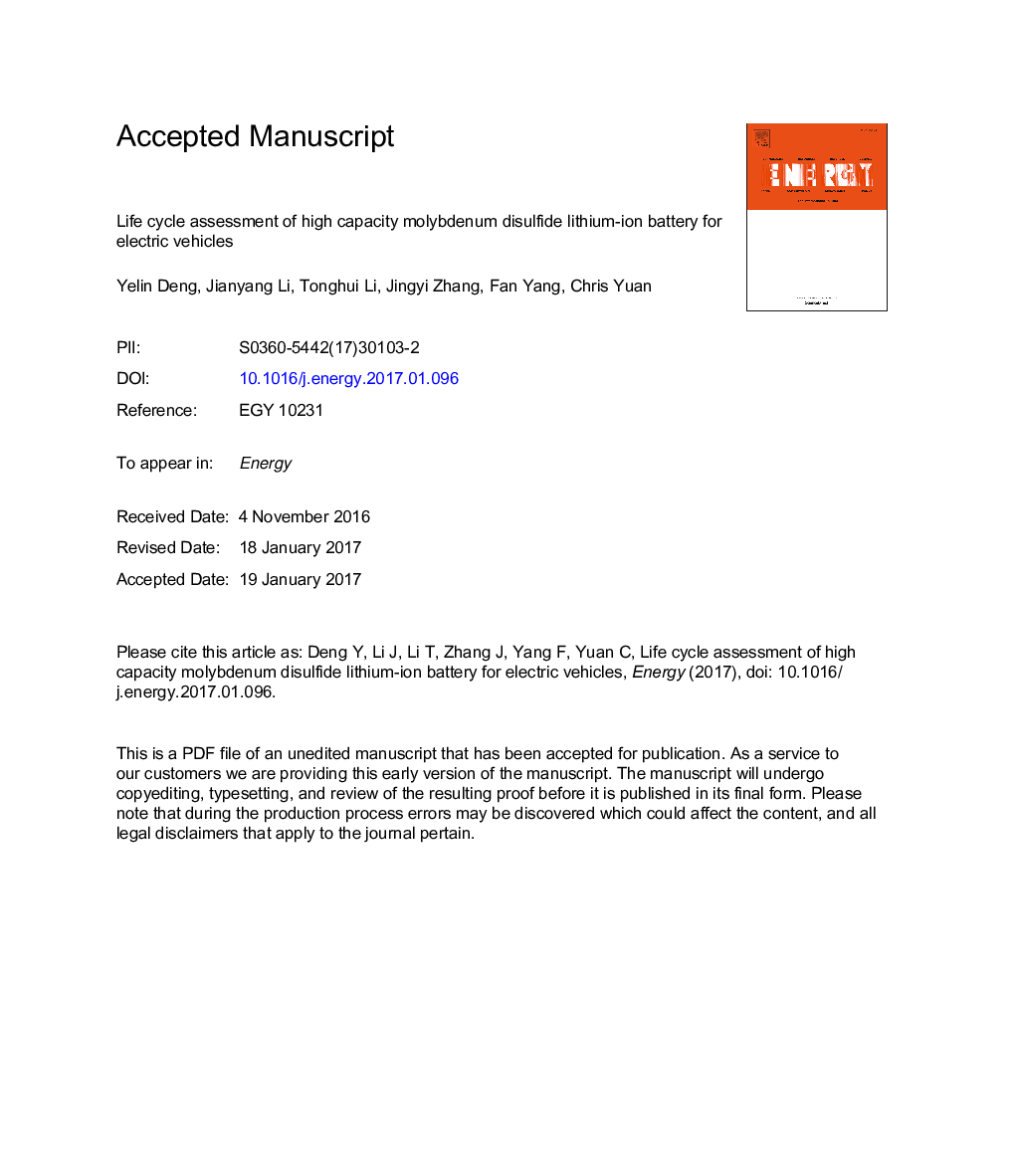| Article ID | Journal | Published Year | Pages | File Type |
|---|---|---|---|---|
| 5476082 | Energy | 2017 | 36 Pages |
Abstract
This study presents a comprehensive life cycle assessment (LCA) on a potential next-generation lithium ion battery (LIB) with molybdenum disulfide (MoS2) anode and Nickel-Cobalt-Manganese oxide (NMC) cathode. The NMC-MoS2 battery is configured with 49.4 kWh capacity enabling a 320 km driving range for a mid-sized EV. In this study, the MoS2 anode synthesis is modeled based on our lab-scale experimentation and the battery design is based on the electrochemical parameters obtained from our lab results. The life cycle impact assessment is conducted using the ReCiPe method. The freshwater ecotoxicity impact is assessed through the modified USEtox⢠method, based on the characterization factor of the CNT (carbon nanotubes) is derived. The obtained impact results of the NMC-MoS2 battery are benchmarked with those of a conventional NMC-Graphite battery under the same driving distance per charge. The results show that the NMC-MoS2 battery has higher environmental impacts in most impact categories compared to a conventional NMC-Graphite battery. Impacts on global warming potential and fossil depletion potential are 6%-7% higher while impacts in freshwater ecotoxicity, freshwater eutrophication, human toxicity, marine toxicity, marine eutrophication and terrestrial ecotoxicity are 141%-271% higher. Finally, a sensitivity analysis is performed to investigate the robustness and reliability of the LCA results.
Related Topics
Physical Sciences and Engineering
Energy
Energy (General)
Authors
Yelin Deng, Jianyang Li, Tonghui Li, Jingyi Zhang, Fan Yang, Chris Yuan,
